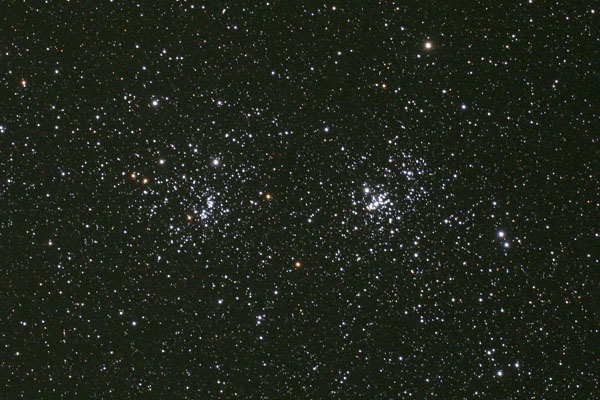|
Surt (planet)
HAT-P-29, also known as Muspelheim since 2019 (as part of the IAU's NameExoWorlds project), is a star about away. It is a G-type main-sequence star. The star's age of 2.2 billion years is less than half that of the Sun. HAT-P-29 is slightly enriched in heavy elements, having 35% more iron than the Sun. A very faint 19th-magnitude stellar companion was detected in 2016 at a projected separation of 3.290″, but Gaia DR2 astrometry suggests that this is an unrelated background object. Planetary system In 2011 a transiting hot Jupiter planet, HAT-P-29b, was detected on a mildly eccentric orbit. The planet was named " Surt" by Denmark in 2019. The planetary orbit is likely aligned with the equatorial plane of the star, with a misalignment equal to 26 degrees. In 2018, a transit-timing variation survey indicated additional planets with masses exceeding approximately half of Earth are absent in the system. References Perseus (constellation) G-type main-sequence ... [...More Info...] [...Related Items...] OR: [Wikipedia] [Google] [Baidu] |
Perseus (constellation)
Perseus is a constellation in the Northern celestial hemisphere, northern sky, named after the Greek mythology, Greek mythological hero Perseus. It is one of the 48 ancient constellations listed by the 2nd-century astronomer Ptolemy, and among the IAU designated constellations, 88 modern constellations defined by the International Astronomical Union (IAU). It is located near several other constellations named after ancient Greek legends surrounding Perseus, including Andromeda (constellation), Andromeda to the west and Cassiopeia (constellation), Cassiopeia to the north. Perseus is also bordered by Aries (constellation), Aries and Taurus (constellation), Taurus to the south, Auriga (constellation), Auriga to the east, Camelopardalis to the north, and Triangulum to the west. Some Celestial cartography, star atlases during the early 19th century also depicted Perseus holding the disembodied head of Medusa, whose Asterism (astronomy), asterism was named together as ''Perseus et Capu ... [...More Info...] [...Related Items...] OR: [Wikipedia] [Google] [Baidu] |
Denmark
Denmark is a Nordic countries, Nordic country in Northern Europe. It is the metropole and most populous constituent of the Kingdom of Denmark,, . also known as the Danish Realm, a constitutionally unitary state that includes the Autonomous administrative division, autonomous territories of the Faroe Islands and Greenland in the north Atlantic Ocean.* * * Metropolitan Denmark, also called "continental Denmark" or "Denmark proper", consists of the northern Jutland peninsula and an archipelago of 406 islands. It is the southernmost of the Scandinavian countries, lying southwest of Sweden, south of Norway, and north of Germany, with which it shares a short border. Denmark proper is situated between the North Sea to the west and the Baltic Sea to the east.The island of Bornholm is offset to the east of the rest of the country, in the Baltic Sea. The Kingdom of Denmark, including the Faroe Islands and Greenland, has roughly List of islands of Denmark, 1,400 islands greater than in ... [...More Info...] [...Related Items...] OR: [Wikipedia] [Google] [Baidu] |
Planetary Transit Variables
Planetary means relating to a planet or planets. It can also refer to: Science * Planetary habitability, the measure of an astronomical body's potential to develop and sustain life * Planetary nebula, an astronomical object People * Planetary (rapper), one half of east coast rap group OuterSpace Arts, entertainment, and media * ''Planetary'' (comics), a comic book series by Warren Ellis and John Cassaday * "Planetary (Go!)", a 2011 song by rock band My Chemical Romance * ''Planetary Radio'', a public radio show about space exploration, produced by The Planetary Society Organizations * The Planetary Society, the Earth's largest space interest group Technology * Epicyclic gearing An epicyclic gear train (also known as a planetary gearset) is a gear reduction assembly consisting of two gears mounted so that the center of one gear (the "planet") revolves around the center of the other (the "sun"). A carrier connects the ... (planetary gearing), an automotive transmission te ... [...More Info...] [...Related Items...] OR: [Wikipedia] [Google] [Baidu] |
Binary Stars
A binary star or binary star system is a system of two stars that are gravitationally bound to and in orbit around each other. Binary stars in the night sky that are seen as a single object to the naked eye are often resolved as separate stars using a telescope, in which case they are called ''visual binaries''. Many visual binaries have long orbital periods of several centuries or millennia and therefore have orbits which are uncertain or poorly known. They may also be detected by indirect techniques, such as spectroscopy (''spectroscopic binaries'') or astrometry (''astrometric binaries''). If a binary star happens to orbit in a plane along our line of sight, its components will eclipse and transit each other; these pairs are called ''eclipsing binaries'', or, together with other binaries that change brightness as they orbit, ''photometric binaries''. If components in binary star systems are close enough, they can gravitationally distort each other's outer stellar atmospheres. ... [...More Info...] [...Related Items...] OR: [Wikipedia] [Google] [Baidu] |
G-type Main-sequence Stars
A G-type main-sequence star (spectral type: G-V), also often, and imprecisely, called a yellow dwarf, or G star, is a main sequence, main-sequence star (luminosity class V) of stellar classification, spectral type G. Such a star has about 0.9 to 1.1 solar masses and an effective temperature between about . Like other main-sequence stars, a G-type main-sequence star converts the Chemical element, element hydrogen to helium in its core by means of nuclear fusion. The Sun, the star in the center of the Solar System to which the Earth is gravitationally bound, is an example of a G-type main-sequence star (G2V type). Each second, the Sun fuses approximately 600 million tons of hydrogen into helium in a process known as the proton–proton chain (4 hydrogens form 1 helium), Mass–energy equivalence, converting about 4 million tons of matter to energy. Besides the Sun, other well-known examples of G-type main-sequence stars include Alpha Centauri, Tau Ceti, and 51 Pegasi. Description Th ... [...More Info...] [...Related Items...] OR: [Wikipedia] [Google] [Baidu] |
Transit-timing Variation
Transit-timing variation is a method for detecting exoplanets by observing variations in the timing of a transit. This provides an extremely sensitive method capable of detecting additional planets in the system with masses potentially as small as that of Earth. In tightly packed planetary systems, the gravitational pull of the planets among themselves causes one planet to accelerate and another planet to decelerate along its orbit. The acceleration causes the orbital period of each planet to change. Detecting this effect by measuring the change is known as transit-timing variations. "Timing variation" asks whether the transit occurs with strict periodicity or if there exists a variation. The first significant detection of a non-transiting planet using transit-timing variations was carried out with NASA's Kepler telescope. The transiting planet Kepler-19b shows transit-timing variation with an amplitude of 5 minutes and a period of about 300 days, indicating the presence of a sec ... [...More Info...] [...Related Items...] OR: [Wikipedia] [Google] [Baidu] |
Surtr
In Norse mythology, Surtr (Old Norse "black"Orchard (1997:154). or more narrowly "swart",Simek (2007:303–304) Surtur in modern Icelandic language, Icelandic), also sometimes written Surt in English, is a jötunn; he is the greatest of the fire giants and further serves as the guardian of Muspelheim, which is one of the only two realms to exist before the beginning of time, alongside Niflheim. Surtr is attested in the ''Poetic Edda'', compiled in the 13th century from earlier traditional sources, and the ''Prose Edda'', written in the 13th century by Snorri Sturluson. In both sources, Surtr is foretold as being a major figure during the events of Ragnarök; carrying his Flaming sword (mythology)#Germanic mythology, bright sword, he will go to battle against the Æsir, he will battle the major god Freyr, and afterward the List of mythological objects#Substances from Norse mythology, flames that he brings forth will engulf the Earth. In a book from the ''Prose Edda'' additional inf ... [...More Info...] [...Related Items...] OR: [Wikipedia] [Google] [Baidu] |
Main-sequence Star
In astronomy, the main sequence is a classification of stars which appear on plots of stellar color versus brightness as a continuous and distinctive band. Stars on this band are known as main-sequence stars or dwarf stars, and positions of stars on and off the band are believed to indicate their physical properties, as well as their progress through several types of star life-cycles. These are the most numerous true stars in the universe and include the Sun. Color-magnitude plots are known as Hertzsprung–Russell diagrams after Ejnar Hertzsprung and Henry Norris Russell. After condensation and ignition of a star, it generates thermal energy in its dense core region through nuclear fusion of hydrogen into helium. During this stage of the star's lifetime, it is located on the main sequence at a position determined primarily by its mass but also based on its chemical composition and age. The cores of main-sequence stars are in hydrostatic equilibrium, where outward thermal pr ... [...More Info...] [...Related Items...] OR: [Wikipedia] [Google] [Baidu] |
Hot Jupiter
Hot Jupiters (sometimes called hot Saturns) are a class of gas giant exoplanets that are inferred to be physically similar to Jupiter (i.e. Jupiter analogue, Jupiter analogues) but that have very short orbital periods (). The close proximity to their stars and high surface-atmosphere temperatures resulted in their informal name "hot Jupiters". Hot Jupiters are the easiest extrasolar planets to detect via the radial velocity, radial-velocity method, because the oscillations they induce in their parent stars' motion are relatively large and rapid compared to those of other known types of planets. One of the best-known hot Jupiters is . Discovered in 1995, it was the first extrasolar planet found orbiting a Sun-like star. has an orbital period of about four days. General characteristics Though there is diversity among hot Jupiters, they do share some common properties. * Their defining characteristics are their large masses and short orbital periods, spanning 0.36–11.8 ... [...More Info...] [...Related Items...] OR: [Wikipedia] [Google] [Baidu] |
Transit (astronomy)
In astronomy, a transit (or astronomical transit) is the passage of a astronomical object, celestial body directly between a larger body and the observer. As viewed from a particular vantage point, the transiting body appears to move across the face of the larger body, eclipse, covering a small portion of it. The word "transit" refers to cases where the nearer object apparent size, appears smaller than the more distant object. Cases where the nearer object appears larger and completely hides the more distant object are known as occultation, ''occultations''. However, the probability of seeing a transiting planet is low because it is dependent on the alignment of the three objects in a nearly perfectly straight line. Many parameters of a planet and its parent star can be determined based on the transit. In the Solar System One type of transit involves the motion of a planet between a Earth, terrestrial observer and the Sun. This can happen only with inferior and superior pla ... [...More Info...] [...Related Items...] OR: [Wikipedia] [Google] [Baidu] |






